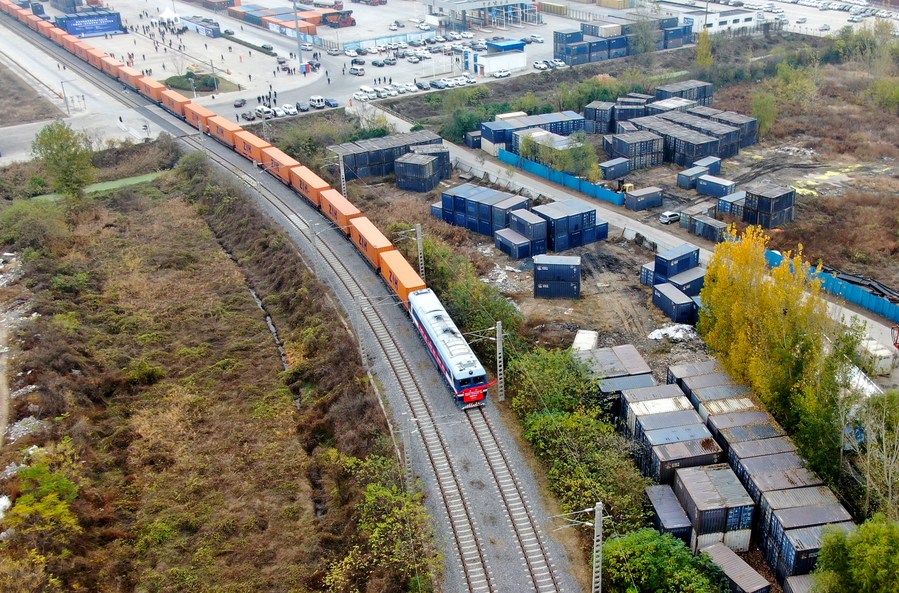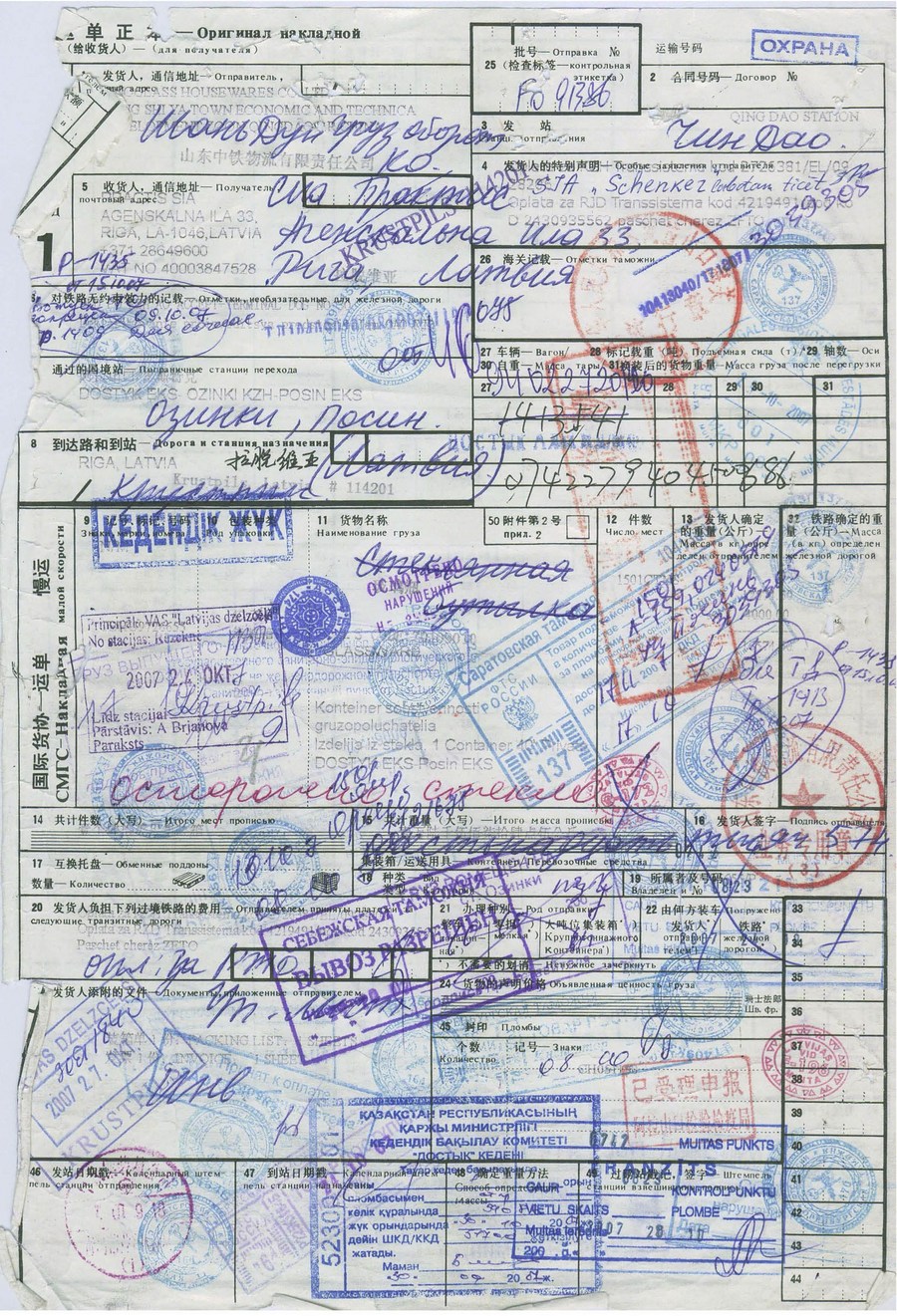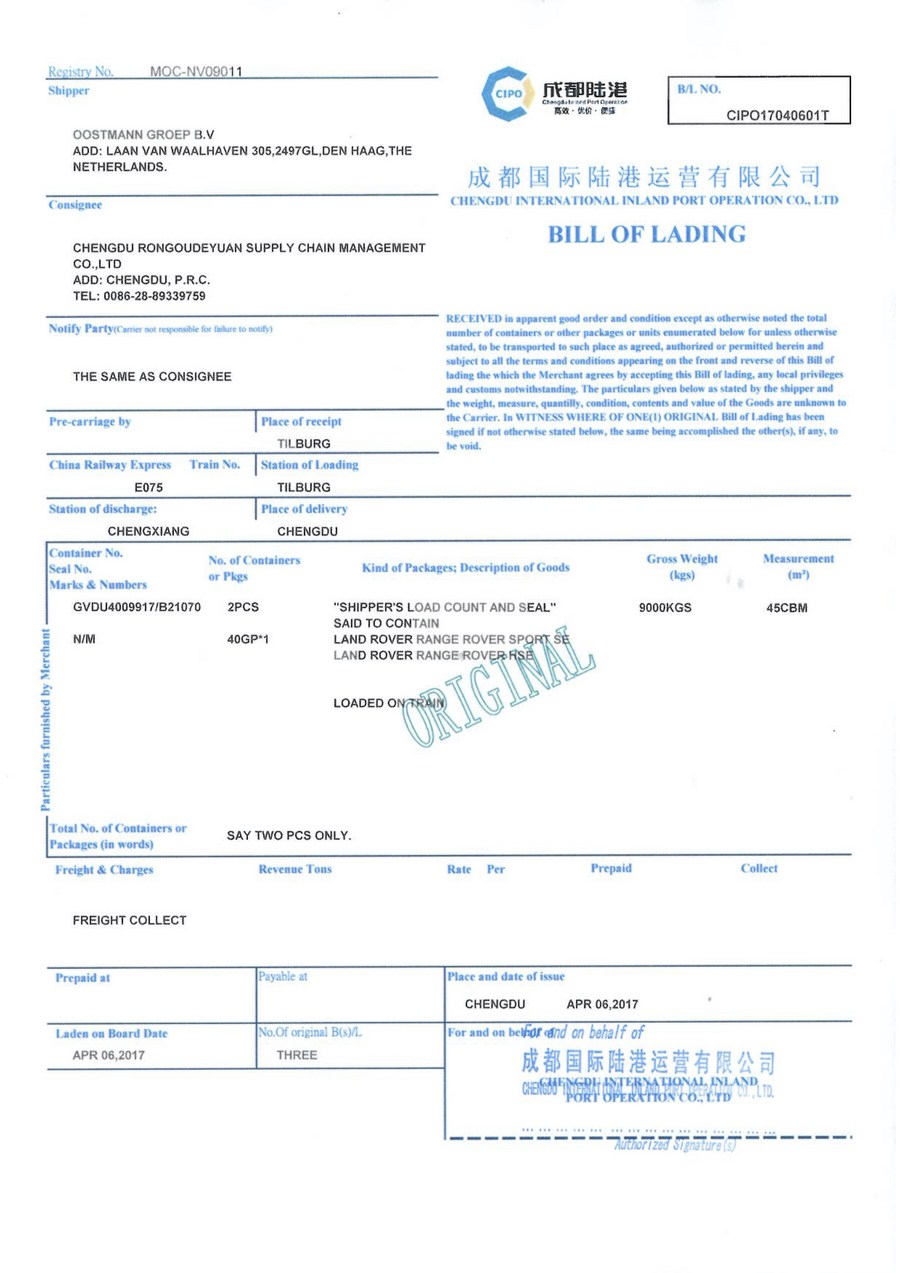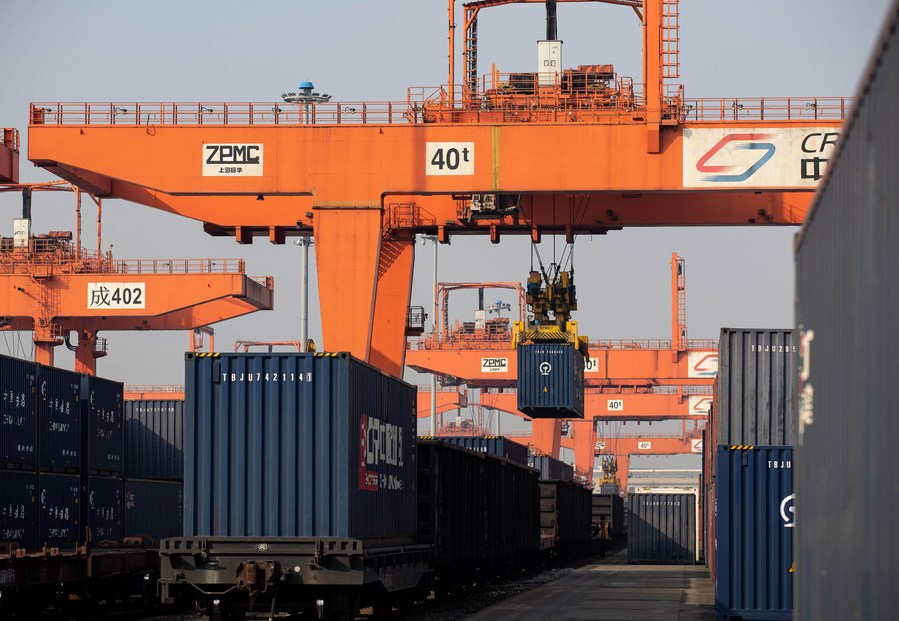Abstract : Blockchain is being used to boost trade through the China-Europe train routes, which have contributed significantly to lowering logistics costs and served as a lifeline stabilizing global trade amid the pandemic.
— Blockchain is being used to boost trade through the China-Europe train routes, which have contributed significantly to lowering logistics costs and served as a lifeline stabilizing global trade amid the pandemic.
— Riding the Belt and Road Initiative proposed by China in 2013, the China-Europe freight train service has connected over 60 domestic cities with major European countries.

Aerial photo shows a China-Europe freight train bound for Helsinki, Finland departing from Putian Station of Zhengzhou, central China’s Henan Province, Nov. 20, 2020. (Xinhua/Hao Yuan)
by Xinhua writers Ma Yujie, Yang Di and Li Like
CHENGDU, April 11 (Xinhua) — Blockchain is being used to boost trade through the China-Europe train routes, which have contributed significantly to lowering logistics costs and served as a lifeline stabilizing global trade amid the pandemic.
On April 1 at the Chengdu International Railway Port, a major port in southwest China’s Sichuan Province for China-Europe cargo trains, a new version of the blockchain-powered platform Sino-Europe Trade Link 2.0 was put into operation by the Industrial and Commercial Bank of China (ICBC).
The updated platform, which allows enterprises to raise funds directly from the bank, will lower costs and speed up the cash flows of relevant foreign trade companies.
Riding the Belt and Road Initiative proposed by China in 2013, the China-Europe freight train service has connected over 60 domestic cities with major European countries.

This undated file photo shows a waybill issued in 2007 for a freight train departing from China to Latvia. (Chengdu International Railway Port Administrative Committee/Handout via Xinhua)
Wang Haiyang, general manager of the Chengdu branch of logistics company Shenzhen Neptune Logistics Co., Ltd, displayed a waybill of the company in 2007. On it, there were over 20 stamps plus a jumble of handwritten notes in different languages.
He recalled how the cargo — four tonnes of glass — was transported from Qingdao, a major port city in east China’s Shandong Province, to Riga, the capital city of Latvia, over a period of 36 days.
“Logistics enterprises back then had to go to the railway station to pick up the waybill before departure and take it to customs for inspection and to have it sealed. After that, the waybill would be kept by the driver and be checked by every country along the route. That’s why there are so many stamps and signatures on it,” he said.
“Even after arrival, it took us another three days to go through all the clearance procedures and have the delivery accepted,” said Wang. “Now the China-Europe train only takes about a third of the time.”
The tall order was made possible via a basket of innovations China has made to boost the service. A conspicuous improvement was the intermodal transport document.
Traditionally, the delivery of goods by railway involves multiple parties and waybill standards are not uniform among countries. So a journey could require several waybills and none of them could be used to pick up the goods, making delivery time-consuming and costly.
The intermodal transport document, however, simplifies these en-route procedures and substitutes all waybills. It can also work as a certificate for enterprises to raise funds from the bank.
The document, introduced in 2017, has provided great convenience for foreign trade enterprises and is being widely accepted.

This undated file photo shows the intermodal transport document issued in 2017 by the Chengdu International Inland Port Operation Co., Ltd. to the Rongoudeyuan Supply Chain Management Co., Ltd. (currently known as the Haotong Supply Chain). (Chengdu International Railway Port Administrative Committee/Handout via Xinhua)
Boosted by such new measures, the China-Europe cargo train service has entered the fast track in recent years. Statistics showed that it took three years and three months for the freight trains to make 200 trips, but only two months to increase from 800 to 1,000 trips.
Last year, the freight trains made 12,400 journeys and transported 1.14 million twenty-foot equivalent units of cargo, respectively up by 50 percent and 56 percent year on year.
The intermodal transport document has also laid the foundation for the application of blockchain in cross-border trade.
Blockchain is a specific type of database where all clients can share data yet no one can adjust or erase any exchange. It is therefore lauded for its safety, security and transparency, and has promising applications in facilitating trade.
“We take advantage of blockchain’s merits, such as its tamper-proof nature and timestamps, to form reliable trade data. That can greatly improve the financing capabilities of small and medium-sized foreign trade enterprises,” said staff with ICBC’s Sichuan branch.
“Compared with 2007, we now have the support of blockchain, the Internet of Things and big data, which can help track logistics and significantly lower the risk of cargo damage. So there’s better protection for both the banks and the customers,” said Chen Ran with Chengdu International Inland Port Operation Co., Ltd.
As more data is recorded on the platform, it can also be used by foreign trade companies to obtain more credit.

A China-Europe freight train unloads cargoes at the Chengdu International Railway Port in Chengdu, southwest China’s Sichuan Province, on Feb. 1, 2021. (Xinhua/Jiang Hongjing)
“In the past, banks cared most about our assets, now they are more concerned with our business flows, capital flows and logistics,” said Xiao Lin, general manager of automobile importer Sichuan Haotong Supply Chain Management Co., Ltd.
Xiao said that the intermodal transport document has helped the company maintain a sound capital flow, and their annual imports have risen from just two vehicles to almost 200.
“In addition to cross-border trade, we can also explore the application of the intermodal transport document in domestic logistics in accordance with domestic laws, thus drafting a multimodal transport scheme that can be widely applied,” said Wei Bo with China Railway Chengdu Group Co., Ltd.
(Video reporters: Yang Hua and Yang Di; Video editor: Liu Yuting)■
About Xinhua Silk Road
Xinhua Silk Road (en.imsilkroad.com) is the Belt and Road Initiative (BRI) portal.China’s silk road economic belt and the 21st century maritime silk road website,includes BRI Policy, BRI Trade, BRI Investment, Belt and Road weekly, Know Belt and Road, and the integrated information services for the Belt and Road Initiative (BRI).
Source: Blockchain powers China-Europe rail trade
Comments
Post a Comment